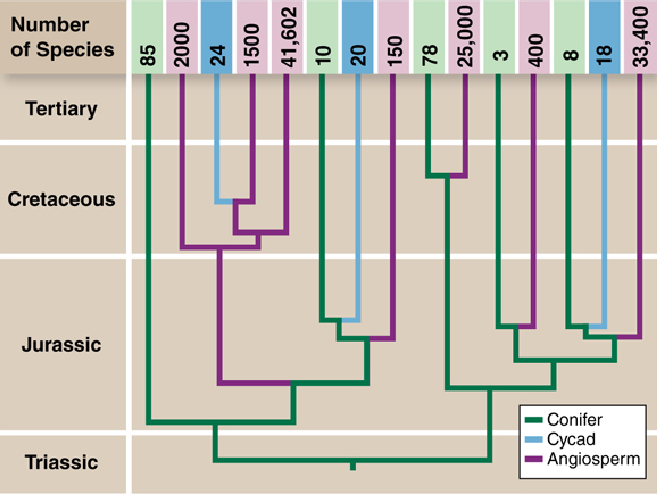Nitrogen fixation is
A) rare among microorganisms.
B) widespread among microorganisms.
C) limited to Proteobacteria.
D) common in Bacteria, but absent in Archaea.
Answer: B
You might also like to view...
The figure shows the evolutionary diversification of the largest clade of herbivorous beetles with the group of plants on which they specialize. Choose the true statements about the evolution of species richness in herbivorous beetles.

_____ Feeding on conifers evolved earlier than feeding on angiosperms.
_____ Feeding on cycads evolved earlier than feeding on angiosperms.
_____ Diversification of the angiosperms may have led to diversification of herbivorous beetles.
_____ The multiple, independent evolution of herbivory in beetles is closely linked to their great species richness.
The nitrogen-limitation hypothesis states that organisms select food in terms of the nitrogen content of the tissue. Why might this be true?
A. Animal tissue contains about 10 times as much nitrogen as plant tissue. B. Animals are able to "fix" nitrogen much more effectively than plants. C. Herbivores prefer plants with lower nitrogen content. D. High nitrogen levels are a key part of plant chemical defenses. E. Plant tissue contains about 10 times as much nitrogen as animal tissue.
Skeletal muscles are connected to bones by cords of connective tissue called
a. muscle fibers. b. sarcomeres. c. tendons. d. ligaments. e. myofibrils.
Researchers have successfully isolated the majority of microbes from their natural habitats and have cultured them in vitro on artificial media to facilitate extensive study.
Answer the following statement true (T) or false (F)